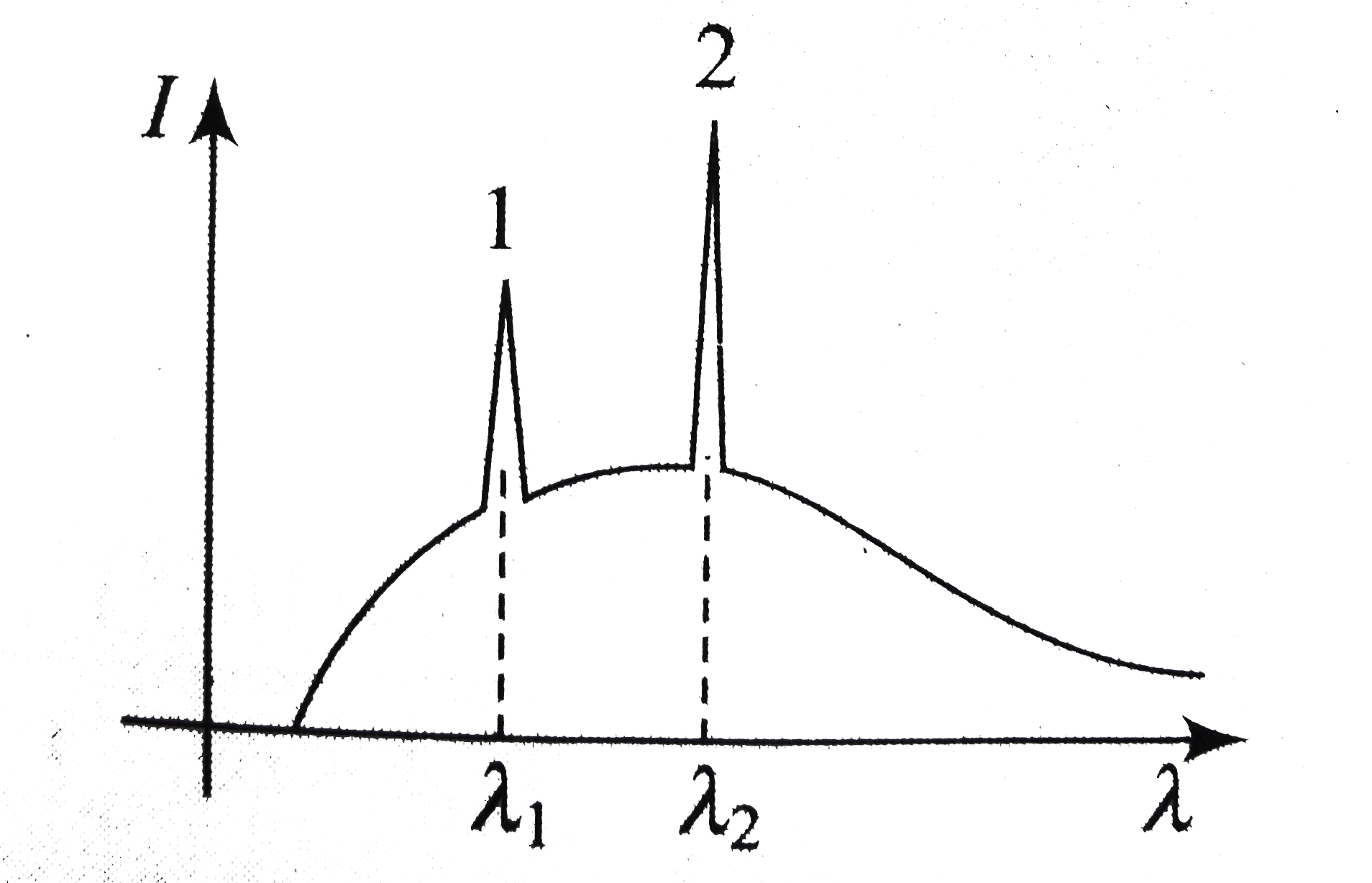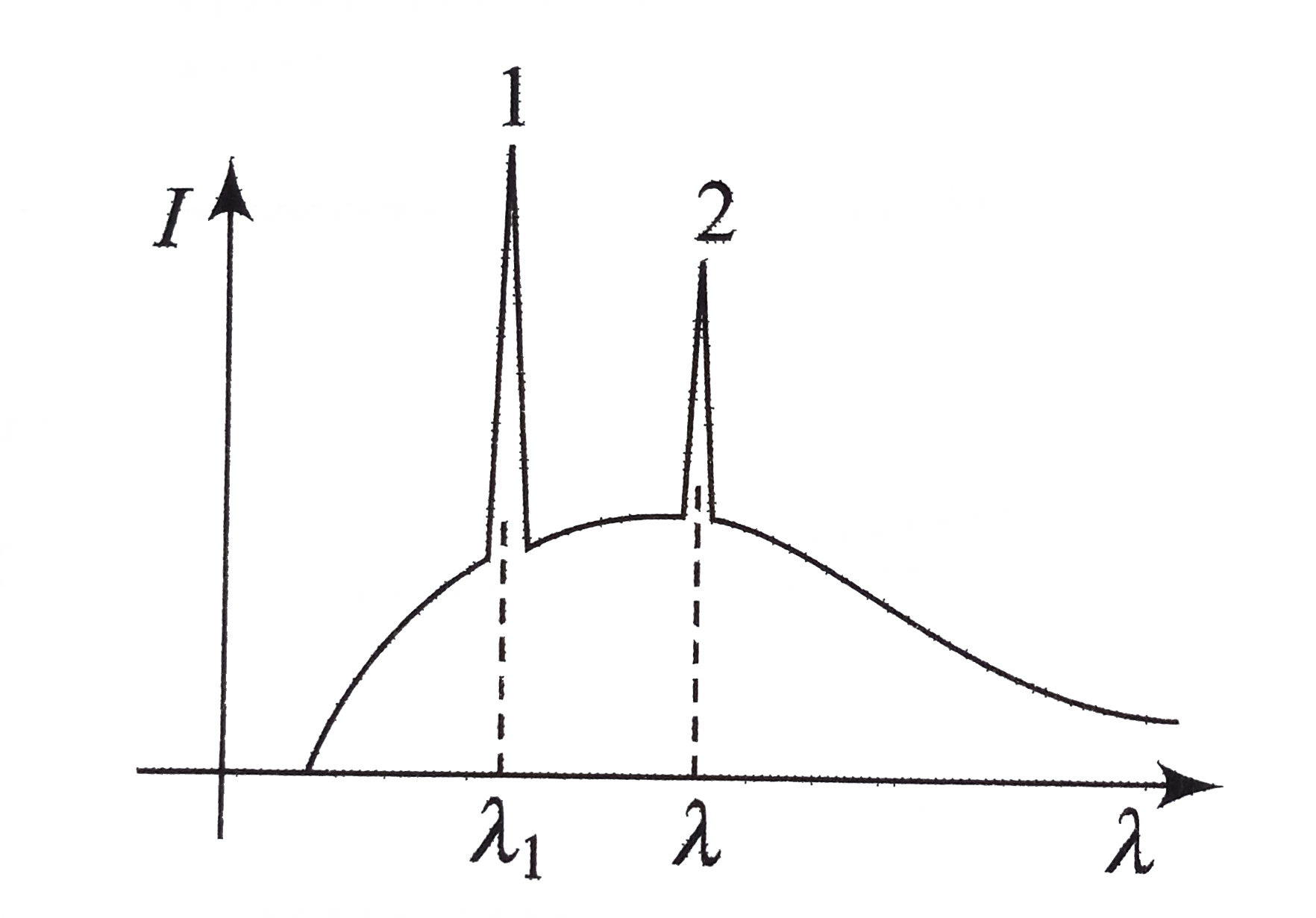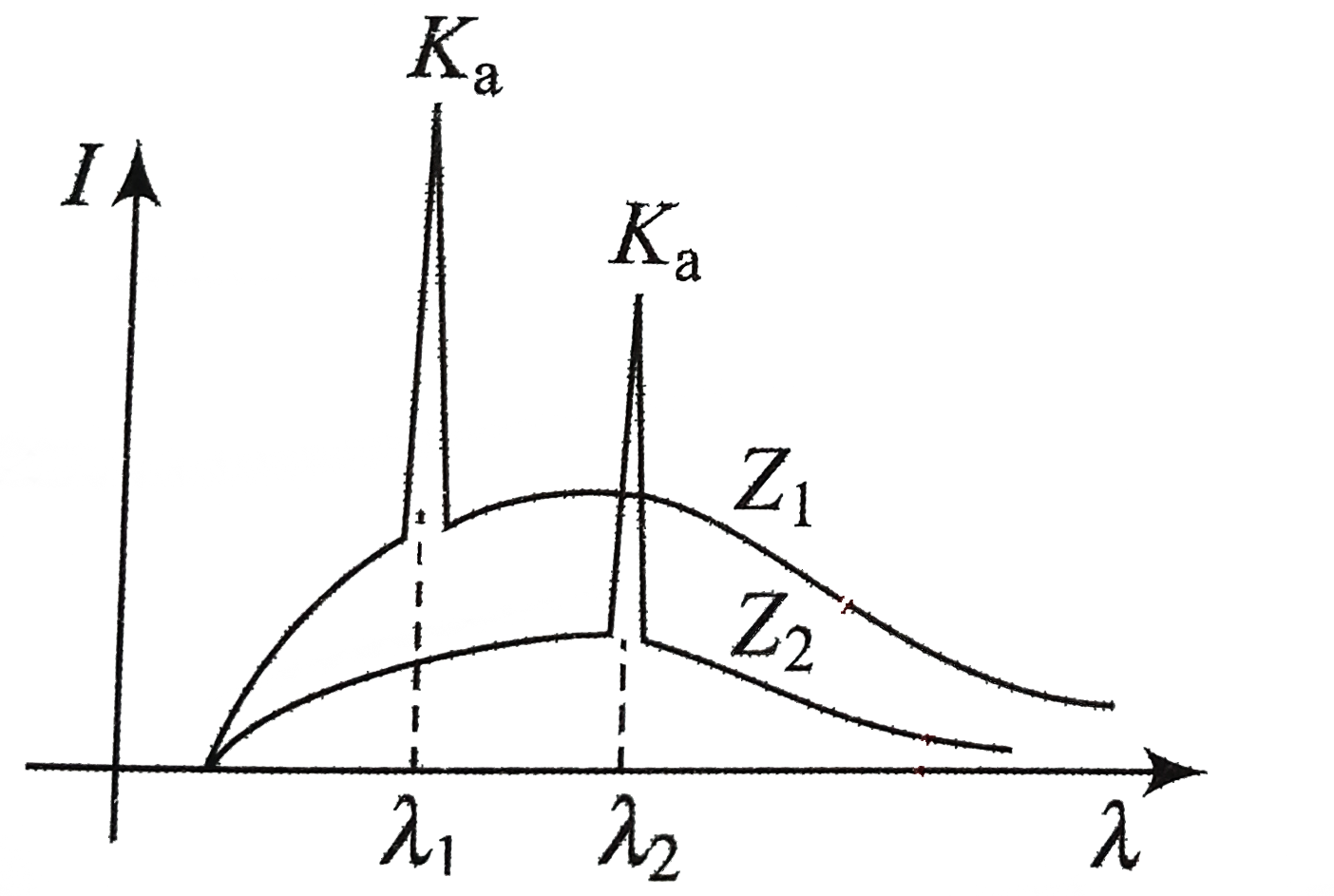Solved Examples from CENGAGE PHYSICS (HINGLISH) ATOMIC PHYSICS for Class 12
| Class 12 | PHYSICS |
| Chapter | ATOMIC PHYSICS |
| CENGAGE PHYSICS (HINGLISH) | Solved Examples |
| Medium | English |
| Academic Year | 2023-2024 |
Question 1
The electron in a hydrogen atom makes a transition n1→n2,wheren1andn2 are the principal quantum numbers of the two energy states. Assume Bohr's model to be valid. The time period of the electron in the initial state is eight time that in the final static. what are the possible value of n1andn2?View SolutionQuestion 9
A gas hydrogen like atoms can absorb radiations of 68eV. Consequently, the atoms emit radiations of only three different wavelengths. All the wavelengths are equal or smaller than that of the absorbed photon.
(a) Determine the initial state of the gas atoms.
(b) Identify the gas atoms.
(c) Find the minimum wavelength of the emitted radiation.
(d) Find the ionization energy and the respective wavelength for the gas atoms.View SolutionQuestion 11
The Bohr moden does not apply when more than one electron orbit the nucleues because it does not account for the electrostatic force that the electron exert on one another.For instance , an electrically neutral lithium atom (Li) contains three electrons in orbit around a nucleus that includes three protons (Z=3), and Bohr's model can be used for the doubly charged positive ion of lithium (Li2^(+)) that results when two electrons are removed from the neutral atom, leaving only one electron to orbit the nucleus . Obtain the ionization energy that is needed to remove the remaining electron from (Li2^(+))View SolutionQuestion 12
The energy levels of a hypothetical one electron atom are given
En=−18.0n2eV, where n=1,2,3 …
a Cumpete the four lowest energy levels and construct the energy level diagram .
b What is the excitation potential of the state n=2?
c What wavelengths (Å) can be emitted when these atoms in the ground stste are bombarded by electron that have been accelerate through a potential difference of 16.2V
d If these atoms are in the ground state , can they absorb radiation having a wavelength of 2000Å ?
e what is the photoclectric threshold wavelength of this atom ? View SolutionQuestion 14
A single electron orbits a stationary nucleus of charge +Ze, where Z is a constant and e is the magnitude of electronic charge . It requires 47.2eV to excite . Find
a the value of Z
b the energy required to excite the electron from the third to the fourth Bohr orbit.
the wavelength of electromagnetic rediation required to remove the electron from the first Bohr orbit to infinity.
d Find the KE,PE, and angular momentum of electron in the first Bohr orbit.
the redius of the first Bohr orbit
[The ionization energy of hydrogen atom =13.6eV Bohr radius =5.3×10_11m, "velocity of light" =3×10−8jms−1, Planck's constant =6.6×10−34j−s]View SolutionQuestion 17
The energy level excitation potential of a hydrogen -like atom is shown in Figure
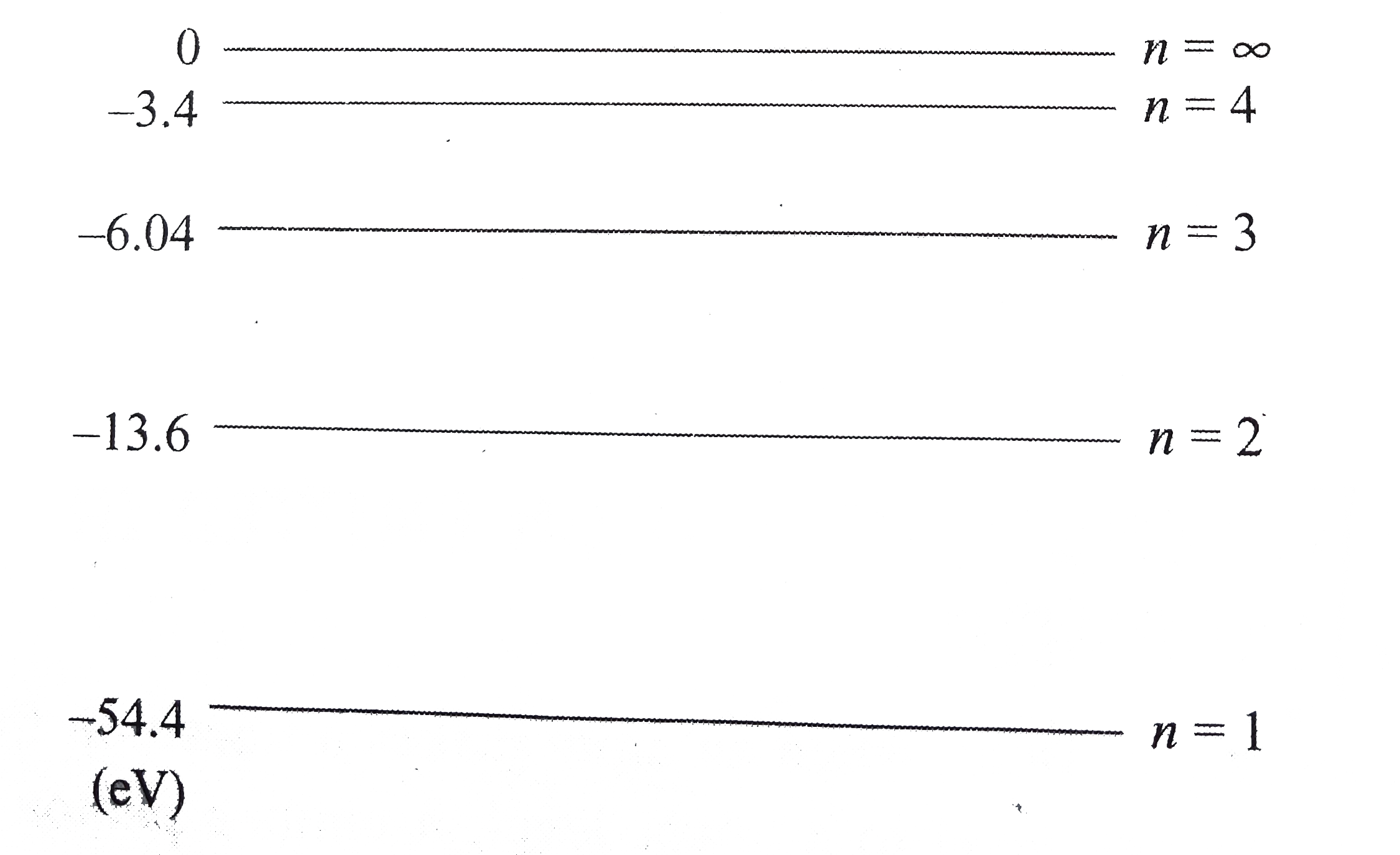
a Find the value of Z
b If initially the atom is in the ground state ,then
(i) determine its excitation potential, and
m (ii) determine its ionization potential.
c Can it absorbe a photom of 42eV?
d Can it absorbe a photom of 56eV?
e Calculate the radius of its first Bohr orbit.
f Calculate the kinectic and potential energy of an electron in the first orbit.View SolutionQuestion 20
A hydrogen atom is in the third excited state. It make a transition to a different state and a photon is either observed or emitted. Determine the quantum number n of the final state and the energy energy of the photon If it is
a emitted with the shortest possible wavelength.
b emitted with the longest possible wavelength and
c absorbed with the longest possible wavelength.View SolutionQuestion 25
A particle known as mu meson has a charge equal to that of no electron and mass 208times the mass of the electron B moves in a circular orbit around a nucleus of charge +3e Take the mass of the nucleus to be infinite Assuming that the bohr's model is applicable to this system (a)drive an expression for the radius of the nth Bohr orbit (b) find the value of a for which the radius of the orbit it appropriately the same as that at the first bohr for a hydrogen atom (c) find the wavelength of the radiation emitted when the u - mean jump from the orbit to the first orbitView SolutionQuestion 34
Consider a hydrogen-like atom whose energy in nth excited state is given by
En=−13.6Z2n2
When this excited makes a transition from excited state to ground state , most energetic photons have energy
Emax=52.224eV. and least energetic photons have energy
Emax=1.224eV
Find the atomic number of atom and the intial state or excitation.View SolutionQuestion 35
A gas of identical hydrogen-like atoms has some atoms in the lowest in lower (ground) energy level A and some atoms in a partical upper (excited) energy level B and there are no atoms in any other energy level.The atoms of the gas make transition to higher energy level by absorbing monochromatic light of photon energy 2.7eV.
Subsequenty , the atom emit radiation of only six different photon energies. Some of the emitted photons have energy 2.7eV some have energy more , and some have less than 2.7eV.
a Find the principal quantum number of the intially excited level B
b Find the ionization energy for the gas atoms.
c Find the maximum and the minimum energies of the emitted photons. View SolutionQuestion 36
A hydrogen-like atom (aatomic number Z) is in a hight excited state of quantum number n . This excited atom can make a transition to the first excited state by successively emitting two proton of energy 10.20eVand17.00eV, respectively.
Alternatively , the atom from the same excited state can make a transition to the second excited state by successively emitting two proton of energy 4.25eVand5.954eV, respectively. Determine the value of nandZ (ionization energy of hydrogen atom =13.6eV)View SolutionQuestion 37
Electron in a hydrogen-like atom (Z=3) make transition from the forth excited state to the third excited state and from the third excited state to the second excited state. The resulting radiations are incident potential for photoelectrons ejested by shorter wavelength is 3.95eV.
Calculate the work function of the metal and stopping potiential for the photoelectrons ejected by the longer wavelength.View SolutionQuestion 38
The rediation emitted when an electron jumps from n=3→n=2 orbit in a hydrogen atom falls on a metal to produce photoelectron. The electron from the metal surface with maximum kinetic energy are made to move perpendicular to a magnetic field of (1/320)T in a radius of 10−3m. Find (a) the kinetic energy of the electrons, (b) Work function of the metal , and (c) wavelength of radiation.View SolutionQuestion 48
A cobalt target (Z=27) is bomberded with electron and the wavelength of its characteristic spectrum are measured . A second , fainter characcteristic spectrum is also found because of an impurity in the target. The wevelength of the Kα lines are 178.9 pm (cobalt) and 143.5± (impurity). What is the impurity?View SolutionQuestion 52
A single electron orbit around a stationary nucleus of charge +Ze where Z is a constant and e is the magnitude of the electronic charge. It requires47.2eV to excite the electron from the second bohr orbit to the third bohr orbit. Find
(i) The value of Z
(ii) The energy requiredto nucleus the electron from the third to the fourth bohr orbit
(iii) The wavelength of the electronmagnetic radiation required to remove the electron from the first bohr orbit to inlinity
(iv) The energy potential energy potential energy and the angular momentum of the electron in the first bohr orbit
(v) The radius of the first bohr orbit (The ionization energy of hydrogen atom =13.6eV bohr radius =5.3×10−11matre velocity of light =3×108m/sec planks 's constant =6.6×10−34 jules - sec )View SolutionQuestion 54
A double ionized lithium atom is hydrogen like with atomic number 3
(i)Find the wavelength of the radiation to excite the electron in Li++from the first to the third bohr orbit (Ionization energy of the hydrogen atom equals 13.6eV
(ii) How many spectral lines are observed in the emission spectrum of the above excited system ? View SolutionQuestion 56
Light of wavelength 2000Å falls on an aluminium surface . In aluminium 4.2eV of energy is required to remove an electron from its surface. What is the kinetic energy , in electron volt of (a) the fastest and (b) the slowest emitted photo-electron . ( c) What is the stopping potential ? (d) What is the cut - off wavelength for aluminum? (Plank's constant h=6.6×10−34J−s and speed of light c = 3 xx 10^(8) m s^(-1).View SolutionQuestion 58
A 40 W ultraviolet light source of wavelength 2480A. Illuminates a magnesium (mg) surface placed 2 m away. Determine the number of photons emitted from the surface per second and the number incident on unit area of Mg surface per second . The photoelectric work function for Mg is 3.68eV. Calculate the kinetic energy of the fastest electrons ejected from the surface. Determine the maximum wavelength for which the photoelectric effects can be observed with Mg surface.View SolutionQuestion 60
A gas of identical hydrogen-like atoms has some atoms in the lowest in lower (ground) energy level A and some atoms in a partical upper (excited) energy level B and there are no atoms in any other energy level.The atoms of the gas make transition to higher energy level by absorbing monochromatic light of photon energy 2.7eV.
Subsequenty , the atom emit radiation of only six different photon energies. Some of the emitted photons have energy 2.7eV some have energy more , and some have less than 2.7eV.
a Find the principal quantum number of the intially excited level B
b Find the ionization energy for the gas atoms.
c Find the maximum and the minimum energies of the emitted photons. View SolutionQuestion 62
Light form a dicharge tube containing hydrogen atoms falls on the surface of a piece of sodium. The kinetic energy of the fastest photoelectrons emitted from sodium is 0.73 eV. The work function for sodium is 1.82 eV. Find (a) the energy of the photons causing the photoelectrons emission.
(b) the quantum numbers of the two levels involved in the emission of these photons.
(c ) the change in the angular momentum of the electron in the hydrogen atom, in the above transition, and
(d) the recoil speed of the emitting atom assuming it to be at rest before the transition. (lonization potential of hydrogen is 13.6 eV.) View SolutionQuestion 63
Two hydrogen-like atoms A and B are of different masses and each atom contains equal numbers of protons and neutrons. The difference in the energies between the first Balmer lines emitted by AandB , is 5.667eV. When atom atoms AandB moving with the same velocity , strike a heavy target , they rebound with the same velocity in the process, atom B imparts twice the momentum to the target than that A imparts. Identify the atom AandB.View SolutionQuestion 64
a. A stopping potential of 0.82V is required to stop the emission of photoelectrons from the surface of a metal by light of eavelength 4000A. For light of wavelength 3000A, the stopping potential is 1.85V. Find the value of Planck's constant. [1 electrons volt (eV)=1.6×10−19J]
b. At stopping potential, if the wavelength of the incident light is kept fixed at 4000A, but the intensity of light increases two times, will photoelectric current be botained ? Give reasons for your answer.View SolutionQuestion 65
An electron in the ground state of hydrogen atom is revolving in anticlock-wise direction in a circular orbit of radius R.
(i) Obtain an experssion for the orbital magnetic dipole moment of the electron.
(ii) The atom is placed in a uniform magnetic induction →B such that the plane - normal of the electron - orbit makes an angle of 30∘ with the magnetic induction . Find the torque experienced by the orbiting electron.
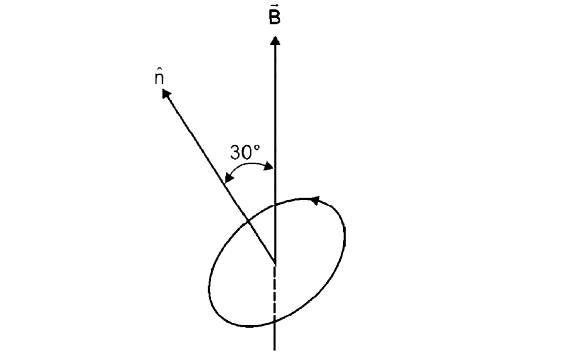 View Solution
View SolutionQuestion 66
The radiation emitted when an electron jumps from n=3→n=2 orbit in a hydrogen atom falls on a metal to produce photoelectron. The electron from the metal surface with maximum kinetic energy are made to move perpendicular to a magnetic field of (1/320)T in a radius of 10−3m. Find (a) the kinetic energy of the electrons, (b) Work function of the metal , and (c) wavelength of radiation.View SolutionQuestion 68
Assume that the de Broglie wave associated with an electron can from a standing wave between the atom arrange in a one dimensional array with nodes at each of the atomic sites. It is found that one such standing wave if the distance d between the atoms of the array is 2A0 A similar standing wave is again formed if d is increased to 2.5Å . Find the energy of the electrons in electron volts and the least value of d for which the standing wave type described above can from . View SolutionQuestion 69
A gas of hydrogen - like ion is perpendicular in such a way that ions are only in the ground state and the first excite state. A monochromatic light of wavelength 1216Å is absorbed by the ions. The ions are lifted to higher excited state and emit emit radiation of six wavelength , some higher and some lower than the incident wavelength. Find the principal quantum number of the excited state identify the nuclear charge on the ions . Calculate the values of the maximum and minimum wavelengths.View SolutionQuestion 70
Photoelectrons are emitted when 400nm radiation is incident on a surface of work - function 1.9 eV. These photoelectrons pass through a region containing α-particles. A maximum energy electron combines with an α -particle to from a He+ ion, emitting a single photon in this process. He+ ions thus formed are in their fourth excited state. Find the energies in eV of the photons lying in the 2 to 4 eV range, that are likely to be emitted during and after the combination. [Take,h=4.14×10−15eV−s] View SolutionQuestion 71
When a beam of 10.6eV photons of intensity 2.0W/m2 falls on a platinum surface of area 1.0×104m2 and work function 5.6eV,0.53% of the incident photons eject photoelectrons. find the number of photoelectrons emitted per second and their minimum and maximum energies (in eV)Take 1eV=1.6×10−19JView Solution


